Whats new and where is it going ...
From Surfersvillage Global Surf News
When it comes to enhancing the ride, the board builders' quiver of tools has never been bigger. Thus for surfers today, there have never been as many options to choose from. Board builders keep tweaking traditional surfboard shapes, re-inventing new out-of-the-box shapes, designing smashing graphics, engineering with material nuances, and exploring dynamic new material combinations. The old standards have been tossed; surfboards will never be as simple as they once were.
Our industry is notorious for setting trends, abandoning them and then reincarnating them. One trend that is experiencing a renaissance is custom board design. The distinguishing points of custom board building are of course the shapers' total control over size and shape, materials used, and even (at least partially) over the creative direction of the way a board is made. For the purposes of this article, custom board design describes the high degree of customization and involvement of the surfer in the production of the surfboard. Even sandwich construction, with the inherent pop-out moniker, has been taking advantage of the broad range of construction and designs options available today.
The Next Increments of Custom: Seen and Unseen
Thruster and quad shapes-the staples for performance surfing-have stabilized, as far as rail configurations, rocker and volume are concerned. And with surfers' individual input, the finished shortboard works great, but shapers aren't satisfied with just "great" anymore, and are searching out and finding unique ways to pinch the next increments of speed, flex memory and performance by using composite materials in ways never before considered.
The surfboard is an integrated amalgam of parts and personality: deck, bottom, rail, rocker, blank, stringer, fins, nose, tail, weight, stiffness and flex. Each component is uniquely customizable and shapers finally now have the tools to make measurable, consistent, reliable engineering advances for each component, resulting in better than great boards. Many renowned shapers and pros have already implemented these new, advanced composite materials into their boards-some of these are obvious to the eye and some are invisible, buried within.
The Surfboard as Surfer to Wave Interface
The deck of a surfboard is where the surfer to wave interface begins, thus is under increasing scrutiny by board builders. The deck is always under foot and under attack in the form of front foot hop, rear foot power, launched then landed aerials, and lip compression via a range of critical maneuvers. All this impact pounds down through the fragile foam blank to the wave beneath us, over and over again. As a result, we dent, ding and delaminate this crucial part of the board. New solutions (other than another patch of fiberglass fabric) are emerging to keep us connected, foot to board to water, with livelier surfing for much longer periods of time.
Reinforcements We Know
These new solutions are well-known natural and synthetic materials that are engineered into the decks of boards in novel ways. Many brands are implementing localized patches or tapes. Thin silk fibers woven into lightweight fabrics are either pre-printed or custom brand printed to add color and enhanced graphics. Black carbon fiber is a good go-to fashion these days, and at 0.5 ounce per square yard it adds reinforcement to rails and tails without adding weight. This carbon veil, sometimes referred to as tissue, reinforces the weakest part of the composite reinforcement, the resin. A third more robust reinforcement is hybrid composite tape using carbon and fiberglass to add unidirectional black and white stripes with measurable strengths.
Reinforcements We Have Never Seen Before
For the more adventurous, there are two never before used reinforcements now available to board builders: one with a bolder look and one with invisible flex enhancement. Both are engineered to catch the impact and spread the load, and to provide the Z-axis columns of strength from your feet through to the foam. Bold in design but costly is the exotic composite fiber Technora. Black with incredible tenacity and break strength, the Ribz Vector Net range of reinforcing fabrics looks like a net and the fibers act like springs.
Skinz is the first nylon microfiber used in surfboards. Bright white with protective UV chemistry and tenacious toughness, Skinz is an inexpensive compression cloth that ads heel, toe, knee, etc. protection without adding board stiffness or weight. Skinz nano-honeycomb flexply cut in chevron shapes, 3/4 deck shapes, or full inlay are popular alternatives to the other, more expensive solutions.
Getting to the Bottom of Things
The bottoms of our precious wave machines, where the rail hits the water, are less obvious but equally as important. Although the bottom of your board doesn't have a body bashing down on it, it does have razor sharp, powerful fins biting, carving, and slashing relentlessly in various degrees of severity. Advances in fin technology are real. The added drive, pivot and bite that modern systems command of the board place the tail in jeopardy. To add drive and reinforce this crucial area, Skinz and Ribz Vector Net are the lightest of the new breed of reinforcements and are laminated in the rear third of the board.
Finally, A Comparable Alternative to Wood
As cores keep improving so do stringers. A composite stringer without the weight or brittleness of traditional composites has been introduced. Powerline Stringerz has riders claiming a more responsive feel-the best part of which is proven lively for 100-1,000 waves without all the inconsistencies and irregularities of wood. At a premium of cost yet reproducible in exact flex pattern from board to board, the ability to replicate a magic custom board is now within the realm of the custom board craftsmen.
Board "Personality"
Flex memory and resonance are newer terms used to describe a surfboard's performance. A board's feel is a more generic expression of its personality, as I described it above. Is it twangy, noodly or bogging down in the water? Too much flex. Is it stiff, boardy, corky or skitterish in the water? Too little flex. Some boards we want to ride like a log, carrying momentum through each turn and cutting a deep path through chop. Others we want to rocket over flat sections, hack off the lip, drop down then accelerate through a trough, and launch over a section to land in the flats... and start all over again. Vibration dampening coupled with the resultant speed at which a surfboard returns energy from being weighted/unweighted is the magic feel we describe to our shaper. This flex memory, how do we get it? And now that we've got this magic resonance, how do we get more?
More Magic Feel
More magic feel is only accomplished through a convergence of ideas with a blending of components. Board builders are taking out the stiffer fiberglass and adding nylon thermoplastic Skinz for its vibration dampening to both decks and bottoms. They are adding carbon and aramid rib structures in every vector and axis imaginable, placing spring, flex and responsiveness where they want it. Add carbon on the rails, down the center, 1/3 at the nose, 2/3 at the tail, 3/4 in the middle, in a V shape, in an X shape, 45 degrees, 75 degrees... you name it, board builders are doing it.
When considering all the advancements in reinforcements, we can't leave out the other half of the composite mix: the resins. Traditional polyester resin has not changed much, so it's good to have a baseline with the reliability of the tried and true glue. Finally, after years of experimenting with epoxy resin, we are now as an industry cool with the cleaner, greener, stronger matrix. Custom epoxy laminations are a dirty little secret that the major brands don't want you to know their top surfers are riding with more and more frequency. Custom epoxy boards are historically stronger and lighter, and yet at retail are perceived as being dingy, drab, and flat next to the popping PU/Poly standard. That has all changed dramatically with advances in chemistry. For some world champs it's all they ride...
Next Generation
More new, next-gen stuff is happening every day in the world of custom surfboards. All these advancements are available in the names you know and trust and in many more brands you should check out. Inquire at Firewire, Channel Islands, ...Lost, Rusty, JS, DHD, Solid, Plus One, Kazuma, Vernor, Stamps, Fiberflex, Estrada, Dewey Weber and of course-because my list has to end somewhere-Infinity.
Hank Johns, SIMA Board Builder Committee Member, Industry Supplier Takes Pulse of Board Building
Subscribe to:
Post Comments (Atom)






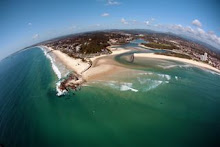




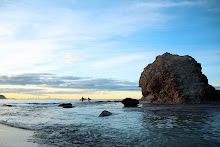


















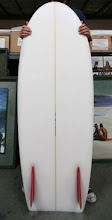


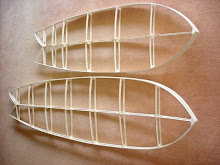

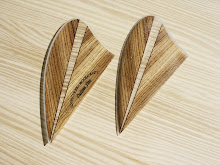

No comments:
Post a Comment